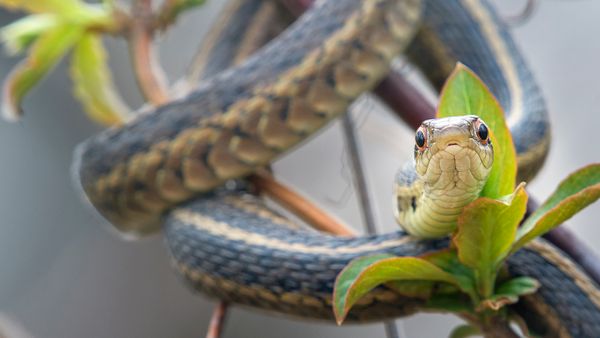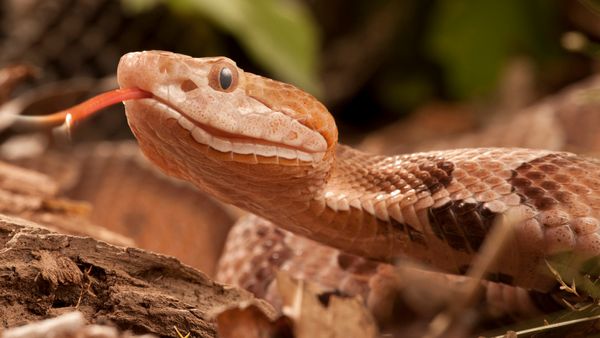The cottonmouth tends to eat fish but will dine on anything it can get into its large mouth, including lizards, other snakes and turtles, baby alligators and birds. The snake is also a prolific breeder, with each litter containing one to 20 babies.
Cottonmouth snakes are ovoviviparous, which is a fancy way of saying their eggs incubate inside the mother's body; the tiny tots are live born. Once they slither out, the juvenile cottonmouths are left on their own. Mom wants nothing to do with them.
While cottonmouths are common, just because you see a snake in the water doesn't mean it's a cottonmouth. To tell them apart, stare into their eyes. If a snake has round pupils, it is not a cottonmouth. But if the eyes look like they should be on a cat, you should leave the snake alone. It's a bonafide cottonmouth.
Cottonmouth Venom Symptoms
The venom of the cottonmouth is highly toxic and can kill you, although fatalities are rare. Beane says the venom prevents the blood of humans from clotting. As the hemotoxins spread, they break down blood cells causing hemorrhaging.
The venom can lead to tissue and muscle damage, internal bleeding and lots of pain around the bite mark. Thankfully, there is an antivenin. If you are bitten, seek immediate medical attention, as is recommended with any snake bite.



